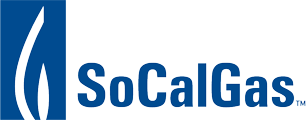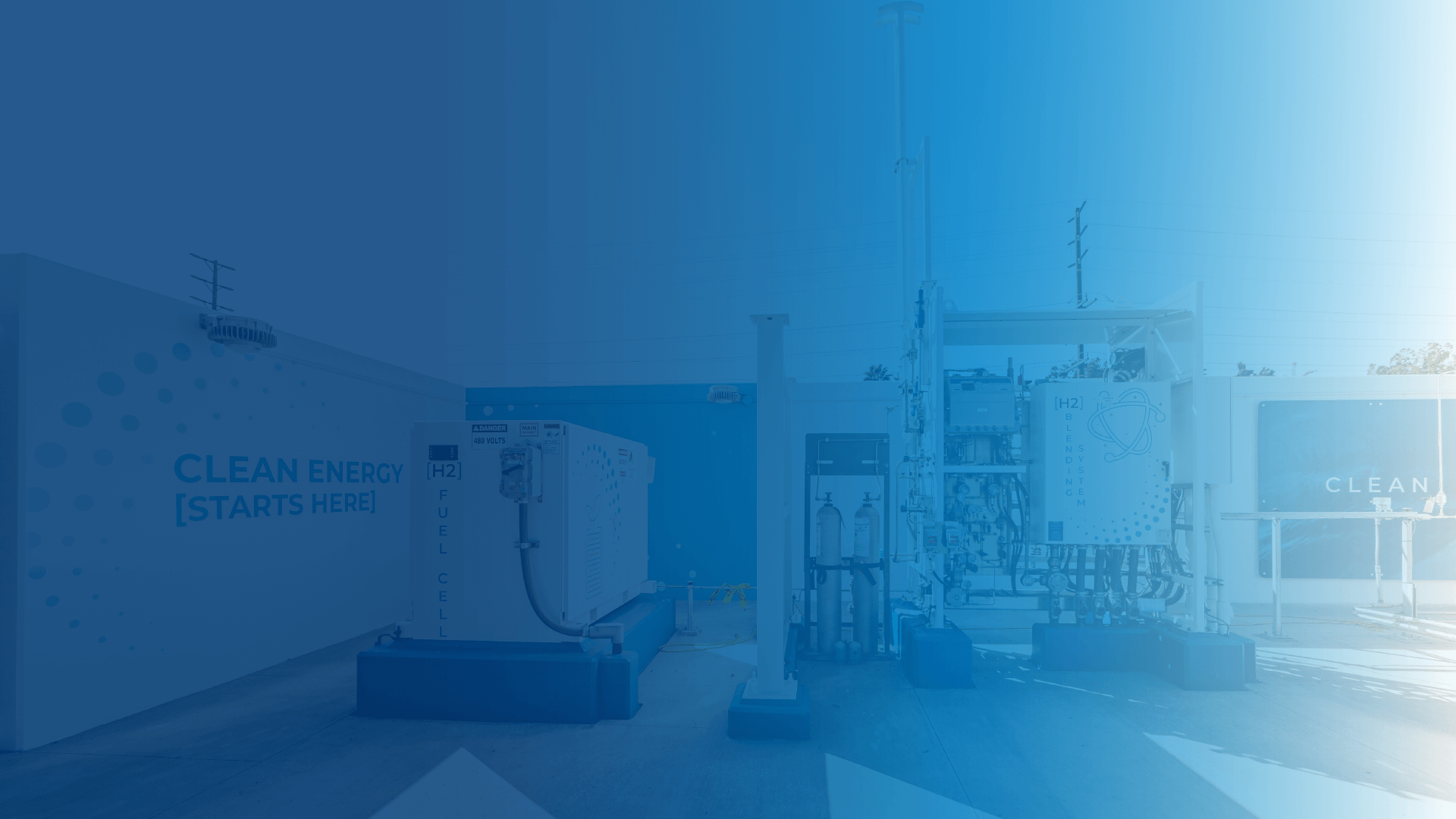SoCalGas’s sustainability goals below are a roadmap for achieving progress, leveraging existing initiatives, and exploring opportunities for partnership as we work towards a more sustainable and resilient energy future.
Our sustainability goals and activities align with many of the United Nations Sustainable Development Goals (UN SDGs). They are also aligned with the key sustainability pillars of our parent company Sempra. Learn more about Sempra’s sustainability pillars in the Sempra Corporate Sustainability Report.

Accelerating the Transition to Clean Energy

The transition to clean energy is an environmental and social imperative. SoCalGas is accelerating the transition by advancing the use of lower-carbon or zero-carbon fuels, such as hydrogen and renewable natural gas, in support of our customers and California’s climate goals.
How we will accelerate the transition to clean energy:
- In collaboration with our research partners, fund $400M for RD&D projects in the areas of clean fuels and hydrogen technology and infrastructure by the end of 20252
- Complete five hydrogen pilot projects by 2025
- Develop hydrogen infrastructure solutions for the 2028 Olympics
- Deliver 20% renewable natural gas to core customers by 20303
- Demonstrate technical capability for gas distribution to safely support up to 20% hydrogen blend by 2030
- Establish a hydrogen industrial cluster by 2030
Alignment with UN Sustainable Development Goals:
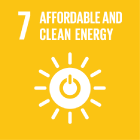
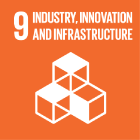
View Aspire2045 Energy Transition

Protecting the Climate and Improving Air Quality in Our Communities

SoCalGas is focused on helping to improve air quality and taking actions to decarbonize our operations and support our customers in reducing their carbon footprints.
How we are reducing greenhouse gases and improving local air quality:
- Exceed the state requirements to demonstrate 20% reduction in methane emissions by 2025; 40% by 2030, from a 2015 baseline4
- Eliminate 100% of vented gas during planned transmission pipeline work by 2030 (excluding emergency repairs)
- Achieve net zero energy for 50% of all of our existing buildings by 20305
- Operate a 100% zero-emission over-the-road fleet by 20356
- Achieve net-zero greenhouse gas emissions for scopes 1, 2, and 3 by 2045
Alignment with UN Sustainable Development Goals:

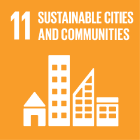
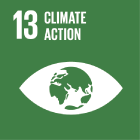
View Aspire2045 Climate Energy
Increasing Clean Energy Access and Affordability

We believe the reliable and affordable supply of clean fuels is vital for an equitable transition to sustainable energy. Every year, more than 180,000 California households and businesses access SoCalGas customer energy efficiency and assistance programs.
How we will be increasing clean energy access and affordability:
- Exceed State energy efficiency goals by 25% or more each year
- Enroll 90% or more of eligible low-income customers in alternative rates for energy programs every year
- Manage gas procurement costs effectively for core customers and achieve top quartile of lowest average monthly residential bill compared to our top 50 peers nationwide every year7
- Develop new clean energy programs for customers by 2025
- Engage our diverse Community Advisory Council quarterly through discussions and surveys to collaborate on issues around clean energy access and affordability
Alignment with UN Sustainable Development Goals:
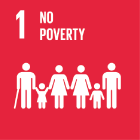
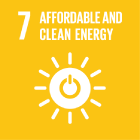
View Aspire2045 Clean Energy Affordability
Advancing Diversity, Equity and Inclusion

A sustainable future involves the meaningful participation of all. Advancing diversity, equity, and inclusion (DEI) in the communities we serve, and in the workplace, promotes transparency and trust. It expands opportunity, sparks innovation and helps achieve measurable social impact.
How we are continuing to advance a diverse, equitable and inclusive culture:
- Take actions to lead the utility industry in racial and ethnic diversity representation in leadership roles by 20258
- Take actions to grow representation of women in leadership roles and overall workforce by 20258
- Plan to invest $50M to positively impact diverse and underserved communities over the next five years9
- Help diverse businesses meet contractual requirements to work with us by increasing supplier participation in Technical Assistance Programs (TAPs) by 30% by 2025
- Increase our total annual Diverse Business Enterprise spend to 45% by 2025
Alignment with UN Sustainable Development Goals:
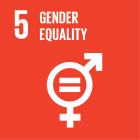
Achieving World-Class Safety

As the nation’s largest gas distribution utility, safety has been – and will remain – our core value. Our comprehensive approach to safety helps to sustain the well-being of the public and our employees, contractors, and infrastructure.
Our actions to achieve world-class safety:
- Train 100% of identified employees in emergency management and incident response each year
- Require 100% of approved pipeline construction contractors to have a formal safety management system program as part of contract requirements starting 202310
- Enhance damage prevention program to decrease the rate of excavation damages to pipelines by 40% by 2030 compared to a 2020 baseline.11
- Aim to achieve zero employee and contractor fatalities each year
Alignment with UN Sustainable Development Goals:
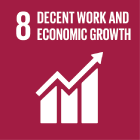
SoCalGas Settlement Agreement
SoCalGas has reached a settlement with the State of California on Consent for Permanent Injunction and Civil Penalties.
Our Renewable Natural Gas Commitment:
SoCalGas’s mission is to build the cleanest, safest, and most innovative energy infrastructure company in America. That mission includes a dedication to increasing the supply of renewable natural gas (“RNG”) to our consumers. Most of SoCalGas’s fuel portfolio is, at present, comprised of non-renewable natural gas derived from fossil fuels. RNG deliveries to our customers represent just under 5% of our existing deliveries as of the end of 2022. For context, however, SoCalGas distributed RNG throughout Central and Southern California in 2020 equivalent to approximately 130% of the natural gas needs of Santa Barbara County. SoCalGas has a goal of delivering 20% RNG to our residential and small commercial and industrial customers by 2030. SoCalGas remains committed to providing increasingly renewable natural gas to its consumers. This is part of our aim to achieve net zero greenhouse gas emissions in our operations and delivery of energy by 2045.
Footnotes
- Clean fuels is defined as alternative fuels that have a net zero carbon footprint. Hydrogen, biogas, synthetic natural gas, biofuels, and several synthetic gaseous and liquid fuels fall in that category, as long as their production process and their end use do not lead to net-positive carbon dioxide emissions.
- Goal of $400M is an aggregate co-funding target cumulative of 5 years, inclusive of 2021-2025.
- Specifically, we aim to provide 20% renewable natural gas to our “core service” as defined by SoCalGas’ Tariff Rule No. 23, by 2030.
- See SB 1371, available at: https://leginfo.legislature.ca.gov/faces/billTextClient.xhtml?bill_id=201320140SB1371.
- Excludes compressor, transmission, and meter and regulator facilities.
- Dependent on functional application and availability of vehicle products.
- Third-party peer data used to track progress on this goal will be sourced from American Gas Association (AGA); Top 50 IOUs by Total Customers.
- "Leadership role" is defined as a management position of supervisor, team lead, manager, director, and/or officer of the Company.
- “Diverse” is defined as Black, Indigenous and People of Color, inclusive of American Indian or Alaska Native, Asian, South Asian, Southeast Asian, Black or African American, Hispanic, Latino or Spanish Origin, Middle Eastern or North African, and Native Hawaiian or other Pacific Islander (BIPOC). “Underserved” is defined as people sharing a particular circumstance, such as homelessness, low income, ill, in-crisis, disabled, LGBTQIA, military/veterans, immigrants, seniors, youth, and students.
- "Approved pipeline construction contractors" defined as a contractor classified under the North American Industry Classification System (NAICS) code 237120, pre-qualified, and approved by SoCalGas.
- Goal is based on anticipated program expansion approval from the California Public Utilities Commission.
Legal Disclaimers
This web page contains statements that constitute forward-looking statements within the meaning of the Private Securities Litigation Reform Act of 1995. Forward-looking statements are based on assumptions with respect to the future, involve risks and uncertainties, and are not guarantees. Future results may differ materially from those expressed in any forward-looking statements. These forward-looking statements represent our estimates and assumptions only as of the date of this web page. We assume no obligation to update or revise any forward-looking statement as a result of new information, future events or other factors.
In this web page, forward-looking statements can be identified by words such as "believes," "expects," "anticipates," "plans," "estimates," "projects," "forecasts," "should," "could," "would," "will," "confident," "may," "can," "potential," "possible," "proposed," "in process," "under construction," "in development," "target," "outlook," "maintain," "continue," “goal,” “aim,” “commit,” or similar expressions, or when we discuss our guidance, priorities, strategy, goals, vision, mission, opportunities, projections, intentions or expectations.
Factors, among others, that could cause actual results and events to differ materially from those described in any forward-looking statements include risks and uncertainties relating to: decisions, investigations, regulations, issuances or revocations of permits and other authorizations, renewals of franchises, and other actions by (i) the California Public Utilities Commission (CPUC), U.S. Department of Energy, and other regulatory and governmental bodies and (ii) states, counties, cities and other jurisdictions in the U.S. in which we do business; the success of business development efforts and construction projects, including risks in (i) completing construction projects or other transactions on schedule and budget, (ii) the ability to realize anticipated benefits from any of these efforts if completed, and (iii) obtaining the consent or approval of partners or other third parties, including governmental entities; the resolution of civil and criminal litigation, regulatory inquiries, investigations and proceedings, and arbitrations, including those related to the natural gas leak at the Aliso Canyon natural gas storage facility; changes to laws; actions by credit rating agencies to downgrade our credit ratings or to place those ratings on negative outlook and our ability to borrow on favorable terms and meet our substantial debt service obligations; the impact of energy and climate goals, policies, legislation and rulemaking, including actions to reduce or eliminate reliance on natural gas generally and any deterioration of or increased uncertainty in the political or regulatory environment for California natural gas distribution companies; the pace of the development and adoption of new technologies in the energy sector, including those designed to support governmental and private party energy and climate goals, and our ability to timely and economically incorporate them into our business; weather, natural disasters, pandemics, accidents, equipment failures, explosions, acts of terrorism, information system outages or other events that disrupt our operations, damage our facilities and systems, cause the release of harmful materials, cause fires or subject us to liability for property damage or personal injuries, fines and penalties, some of which may not be covered by insurance, may be disputed by insurers or may otherwise not be recoverable through regulatory mechanisms or may impact our ability to obtain satisfactory levels of affordable insurance; the availability of natural gas and natural gas storage capacity, including disruptions caused by limitations on the withdrawal of natural gas from storage facilities; the impact of the COVID-19 pandemic, including potential vaccination mandates, on capital projects, regulatory approvals and the execution of our operations; cybersecurity threats to the storage and pipeline infrastructure, information and systems used to operate our businesses, and confidentiality of our proprietary information and personal information of our customers and employees, including ransomware attacks on our systems and the systems of third-party vendors and other parties with which we conduct business; volatility in inflation and interest rates and commodity prices and our ability to effectively hedge these risks and with respect to interest rates, the impact on our cost of capital; changes in tax and trade policies, laws and regulations, including tariffs and revisions to international trade agreements that may increase our costs, reduce our competitiveness, or impair our ability to resolve trade disputes; and other uncertainties, some of which may be difficult to predict and are beyond our control.
These risks and uncertainties are further discussed in the reports that the company has filed with the U.S. Securities and Exchange Commission (SEC). These reports are available through the EDGAR system free-of-charge on the SEC's website, www.sec.gov, and on Sempra’s website, www.sempra.com. Investors should not rely unduly on any forward-looking statements.
Sempra Infrastructure, Sempra LNG, Sempra Mexico, Sempra Texas Utilities, Oncor Electric Delivery Company LLC (Oncor) and Infraestructura Energética Nova, S.A.P.I. de C.V. (IEnova) are not the same companies as the California utilities, San Diego Gas & Electric Company or Southern California Gas Company, and Sempra Infrastructure, Sempra LNG, Sempra Mexico, Sempra Texas Utilities, Oncor and IEnova are not regulated by the CPUC.
